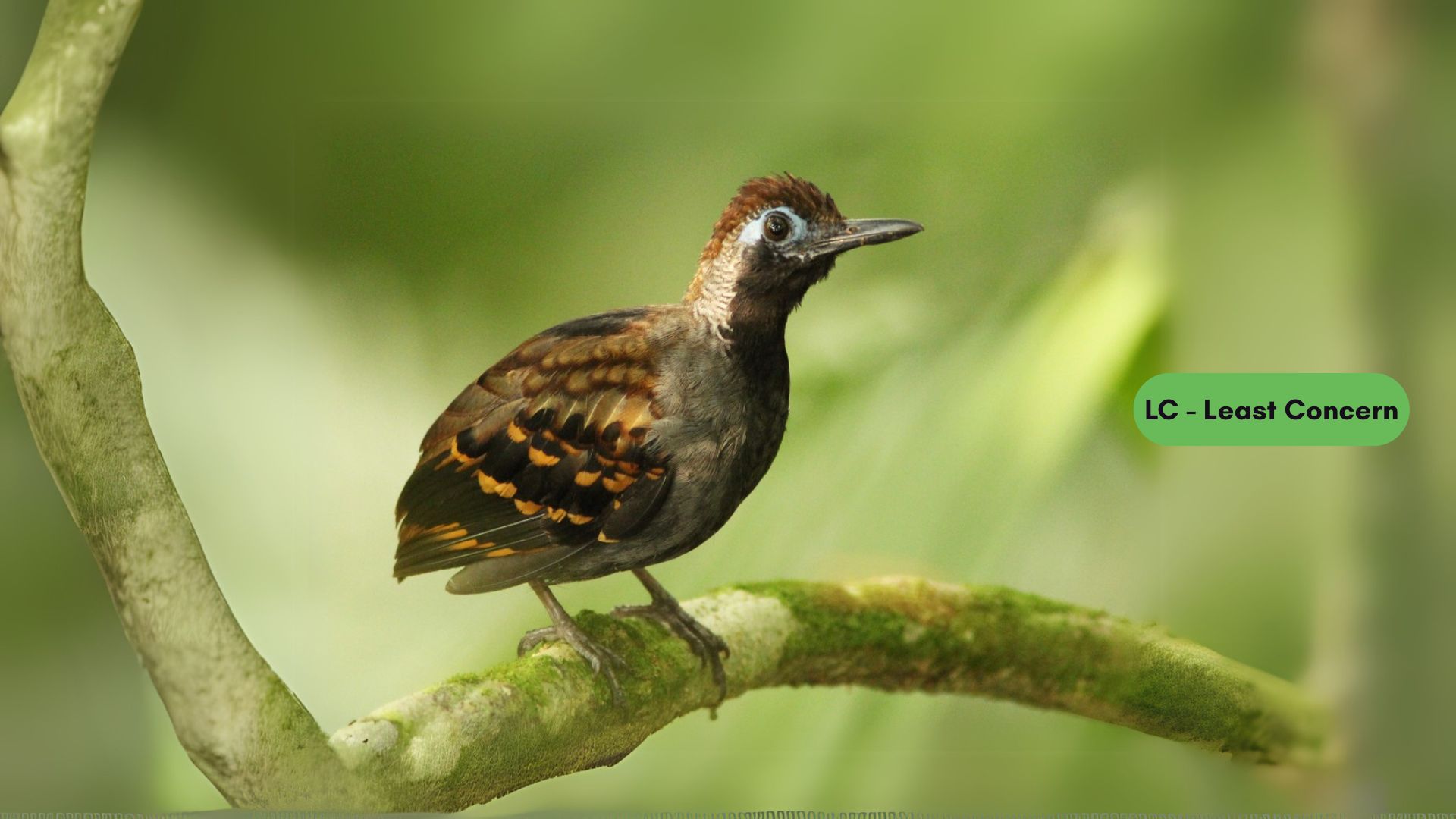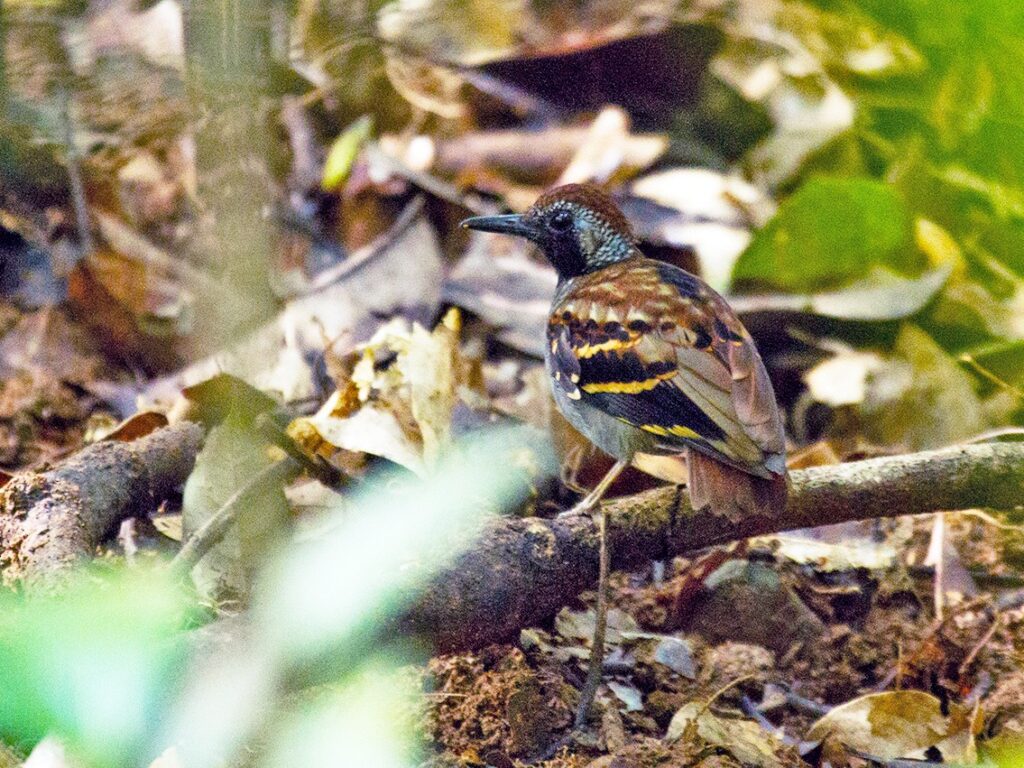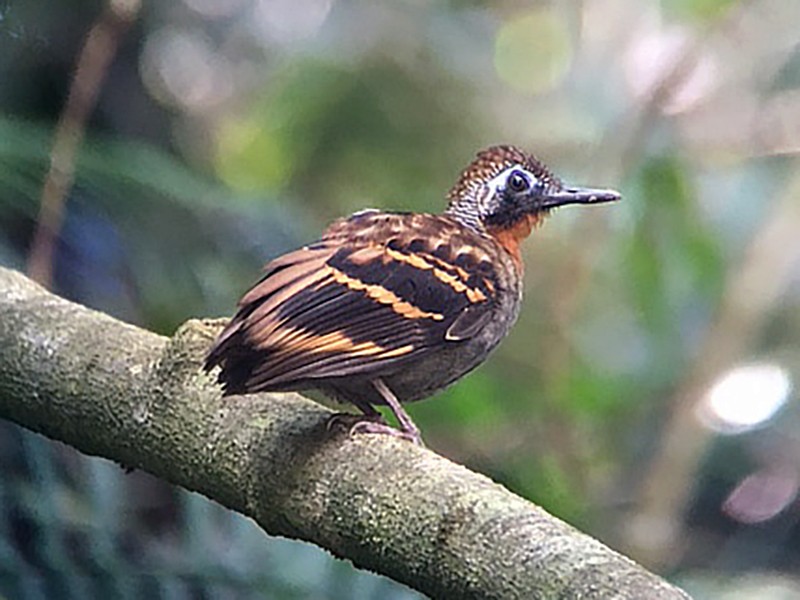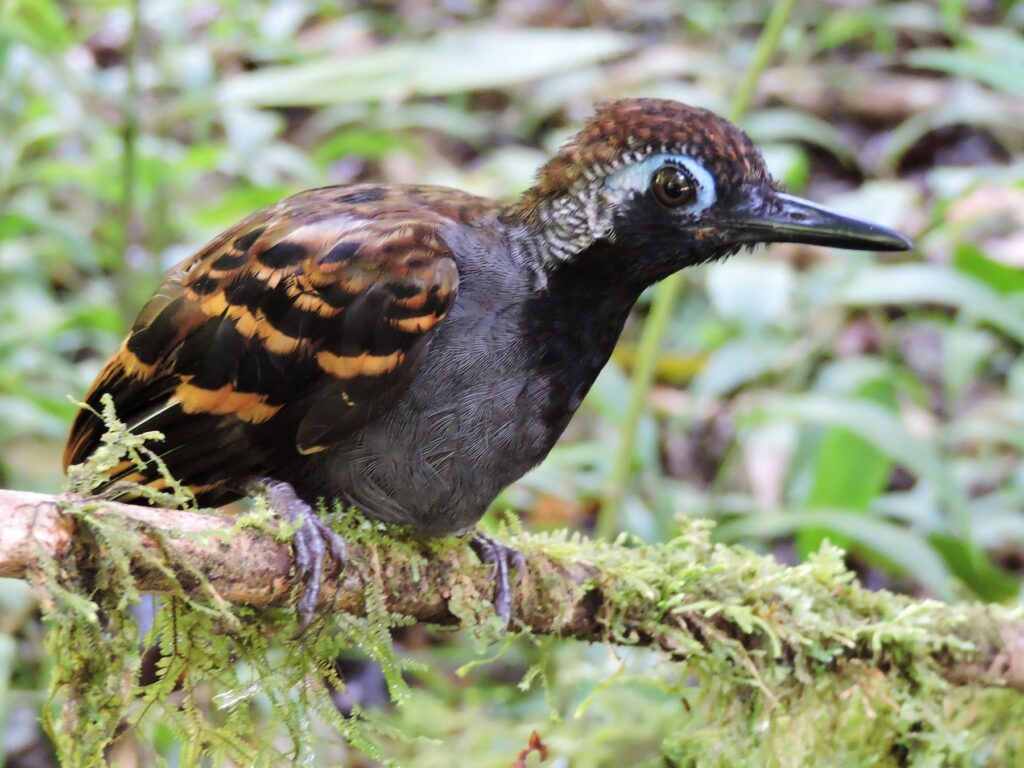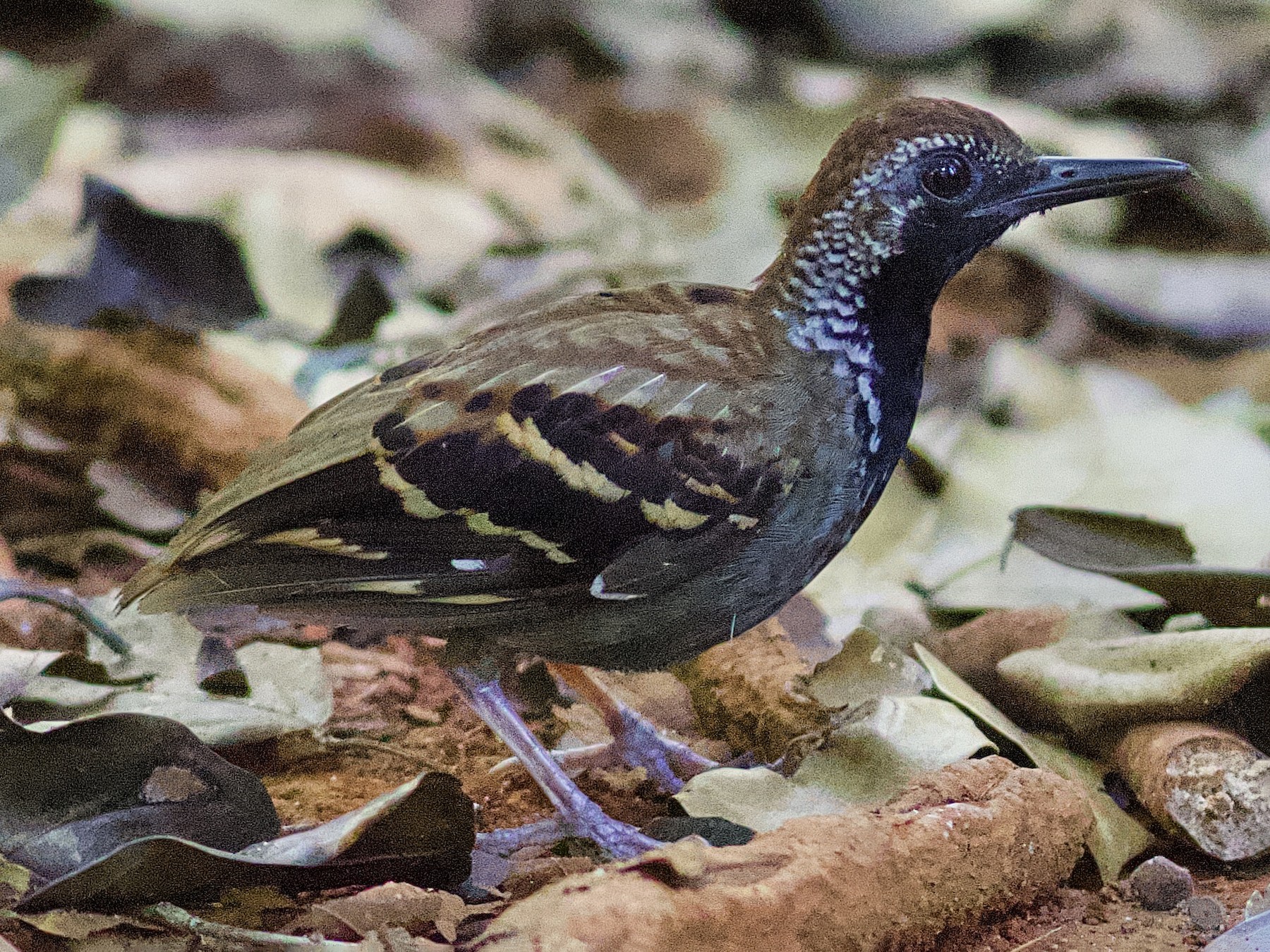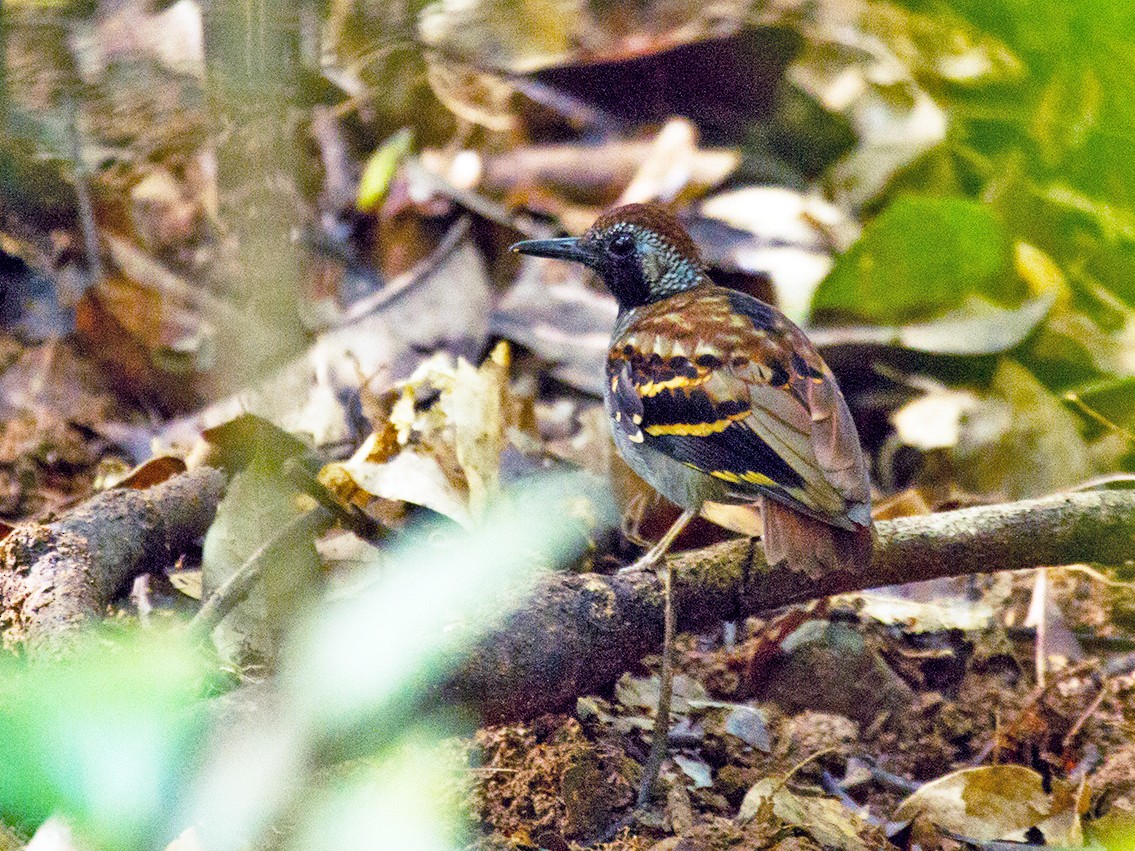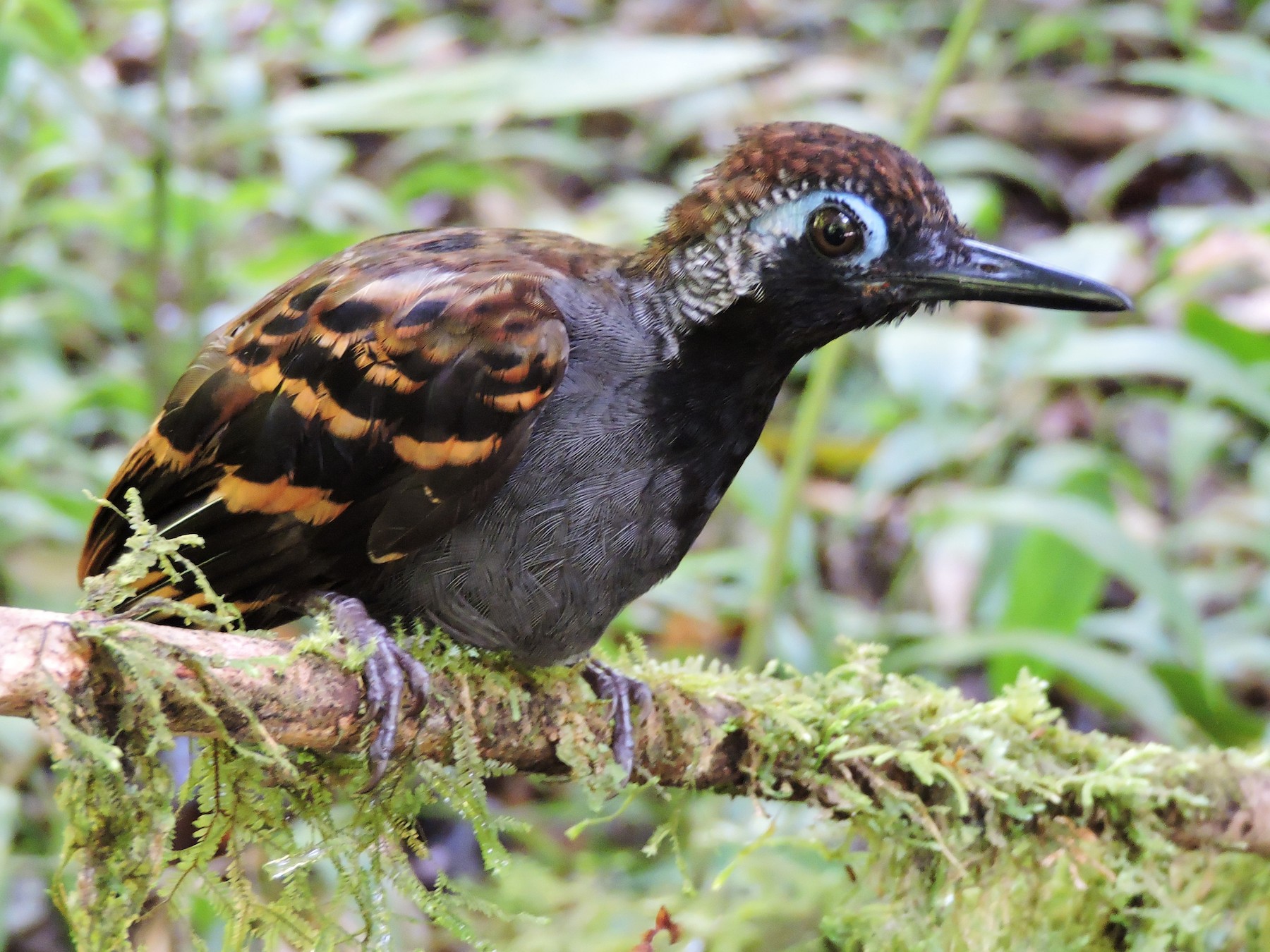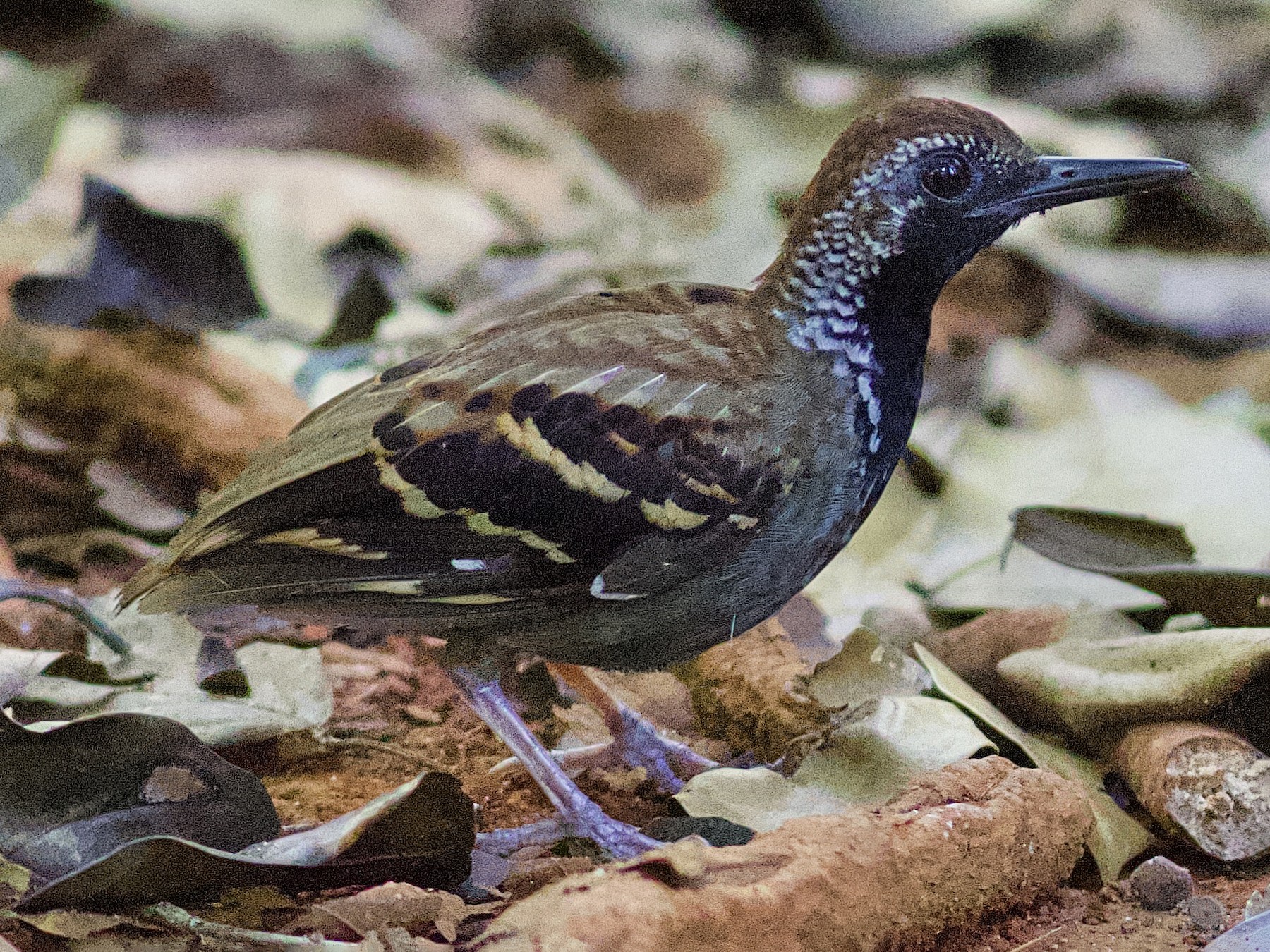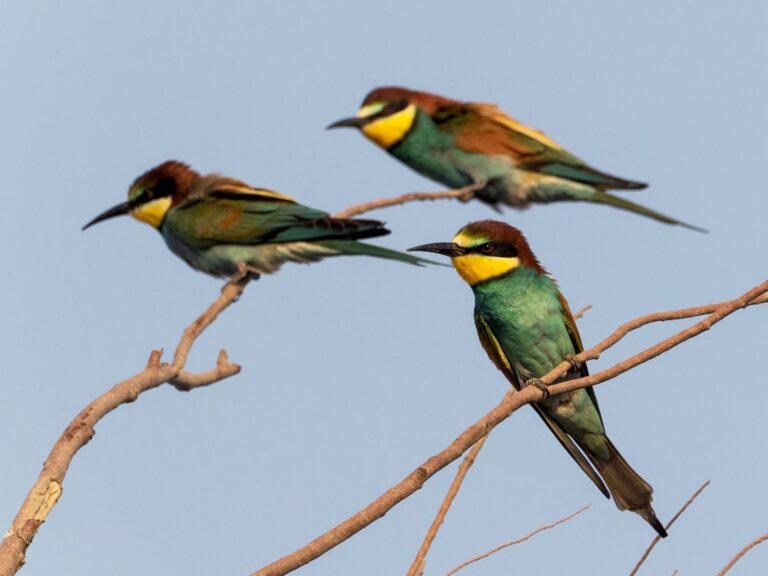Wing-banded Antbird: Discovering the Secrets of a Unique Rainforest Resident
The Wing-banded Antbird draws in birdwatchers and nature lovers with its unusual looks and curious behavior. This species stands out thanks to its bold markings and the way it acts—there’s always something new to notice.
You’ll mostly find it in the thick forests of the Guiana Shield region, where it seems right at home among the wild diversity of plants and animals. This bird’s world is anything but boring.
With those sharp markings and its unmistakable calls, the Wing-banded Antbird does more than just look pretty. It chases insects through the undergrowth, often tagging along behind ant swarms to nab whatever gets flushed out. If you ever get to watch its nesting habits or see how it interacts with others, you’ll get a real sense of how the whole environment fits together.
Key Takeaways
- The Wing-banded Antbird has a striking appearance and complex behaviors.
- It plays an important role in its ecosystem by controlling insect populations.
- Conservation of its habitat is vital for its survival and the health of biodiversity.
Sign Up for Our Monthly Newsletter
Every month we send out our newsletter about interesting (and sometimes quirky) things happening in the world of birding. Give it a try!
Taxonomy and Classification
The Wing-banded Antbird, or Myrmornis torquata, sits in the Thamnophilidae family. Let’s dig into where it fits in the bird world and how it’s related to others.
Scientific Classification
Here’s how scientists classify the Wing-banded Antbird:
- Kingdom: Animalia
- Phylum: Chordata
- Class: Aves
- Order: Passeriformes
- Family: Thamnophilidae
- Genus: Myrmornis
- Species: Myrmornis torquata
It’s part of a group of antbirds that are pretty famous for being shy and having some quirky habits.
Genus and Related Species
The Wing-banded Antbird is actually the only member of its genus, Myrmornis. That’s kind of wild, right?
This genus stands out because these birds stick close to the ground and eat mostly insects. Other relatives in the Thamnophilidae family include different antbirds and antshrikes. Getting to know these connections helps us see what makes each bird tick.
Subspecies and Variations
There are two recognized subspecies of the Wing-banded Antbird:
- Myrmornis torquata torquata – This is the nominate subspecies found in specific regions of South America.
- Myrmornis torquata munda – Found in areas with different environmental conditions, this subspecies shows variations in plumage and behavior.
Studying these subspecies gives us a peek at how they adapt to different places. Their subtle differences tell a story about how they’ve evolved alongside their habitats.
Physical Description
The Wing-banded Antbird sports distinct physical traits that make it easy to pick out from the crowd. Its size, colors, and differences between males and females all help with identification in the wild.
Plumage and Markings
This bird’s look is hard to miss. Its feathers are mostly deep brown with lighter buff and white patches. The pale bands across the wings are what give the bird its name. You’ll also spot white spots on its throat, which really stand out against its dark body.
A noticeable collar wraps around its neck, which helps birders spot it even in the dim light of the forest. All these features help it blend in among the tangled vegetation and sneak up on its prey.
Size and Distinguishing Features
The Wing-banded Antbird is medium-sized, about 20 to 22 cm long. Its sturdy body lets it push through thick underbrush as it searches for food. Its beak is short but tough, perfect for grabbing insects and other small critters. The tail is a bit long and often fans out when the bird gets excited or is poking around for food.
This design helps it move smoothly along the damp forest floor and through low shrubs, where it spends most of its time.
Differences Between Sexes and Ages
There’s a bit of a difference between the sexes if you look closely. Males usually show off bolder markings and sharper contrasts in color, while females keep things a little more low-key.
Juveniles look different too, with less defined markings and duller colors. Their plain look probably helps them stay hidden from predators. As they grow, both males and females develop that signature collar and those wing bands, making them easier to spot once they’re adults.
Distribution and Habitat
The Wing-banded Antbird sticks mostly to the tropical and subtropical zones of South America. It relies on moist lowland forests, which are pretty much its only real home. Let’s break down where you might find it and what it needs to thrive.
Geographic Range
Look for this bird in northern South America. Its range covers parts of Brazil, Bolivia, Colombia, Ecuador, Peru, and Venezuela. You’ll also find it in French Guiana, Guyana, Suriname, and even as far north as central Nicaragua and Panama. These places offer the warm, damp conditions the antbird needs.
Preferred Habitats
Moist lowland forests are where this antbird feels at home. Thick foliage is a must for nesting and hunting. It spends most of its time in the understory, rooting around for insects and other tiny creatures. Leaf litter and dense plants are essential for its way of life.
Habitat Specialization
The Wing-banded Antbird isn’t much for adapting to new places—it’s picky. It needs diverse, crowded forests with lots of places to hide and hunt.
It’s an Amazon rainforest regular, and when the forest gets chopped up or cleared, the bird suffers. Deforestation and habitat changes can hit its population hard. If you see a healthy population of these birds, chances are the forest is doing okay. They really are a sign of a thriving ecosystem.
Behavior and Ecology
The Wing-banded Antbird has some fascinating behaviors and plays a unique part in its environment. From feeding to family life, there’s a lot going on beneath the surface.
Feeding Habits
Insects and other small invertebrates make up most of its diet. The bird usually hunts on the forest floor, only rarely venturing up into the brush. It’s famous for following army ant swarms, grabbing whatever insects get scared out by the ants. Sometimes, it’ll snack on a bit of fruit, but that’s not its main thing.
The kind of food available shapes where it decides to live. Its feeding style ties it closely to the rest of the forest community.
Vocalizations and Communication
The Wing-banded Antbird isn’t shy about making noise. Males especially belt out loud, varied calls to attract mates and stake out territory. These calls change from place to place and can get pretty complicated. Whistles, trills, squawks—you name it, they use it to talk and warn others about danger.
Territorial and Social Behavior
This bird guards its patch of forest fiercely. Males claim and defend territories, especially when it’s time to breed.
They use both their voices and their presence to keep rivals away. Sometimes, they team up with other antbirds like the Spot-backed Antwren for cooperative foraging. Sharing info about food and threats helps everyone out.
Reproduction and Nesting
When it comes to nesting, the Wing-banded Antbird gets right into the thick of things. They build nests in dense plants, keeping their chicks hidden from predators.
The female lays two or three eggs, and both parents pitch in to raise the brood. They feed the chicks until they’re ready to leave the nest, which happens after about two weeks. Their choice of nest sites and shared parenting really help the young survive in the unpredictable rainforest.
Frequently Asked Questions
The Wing-banded Antbird stands out for a few quirky traits, catching the eye of birdwatchers and researchers. Here, you’ll find details about its habitat, what it likes to eat, how it looks, breeding habits, quirky adaptations, and its conservation status.
What is the typical habitat of the Wing-banded Antbird?
This bird tends to hang out in humid lowland forests across South America. It seems to love thick, tangled understories, darting through the leaves as it searches for food.
You’ll often spot it near streams or swampy spots, probably because those places are just packed with insects.
How does the Wing-banded Antbird’s diet compare to that of similar antbird species?
Mostly, the Wing-banded Antbird snacks on insects and other tiny invertebrates. Its menu looks a lot like that of other antbirds, though it might go for certain bugs that hang around its favorite haunts.
It usually forages on the ground or pokes around in low plants, which seems to suit its style.
What are the identifiable features of male and female Wing-banded Antbirds?
Males show off bold wing bands that really pop against their dark feathers, plus a splash of bright yellow on their throats. Females? They’re a bit more understated—duller colors and fainter wing patterns make them tricky to spot if you’re not looking closely.
What are the breeding habits and seasonality of Wing-banded Antbirds?
They get busy during the rainy season, probably because there’s more food for the chicks then. Their nests usually sit on or close to the ground, tucked away in dense greenery for a little extra protection. Both parents pitch in to feed and care for the chicks after they hatch.
How does the Wing-banded Antbird adapt to its environment?
This bird’s camouflage game is strong—it blends right into the underbrush, making it a challenge to spot. It also moves quietly and keeps a low profile, which helps it dodge predators lurking nearby.
What are the conservation status and threats facing Wing-banded Antbirds?
Right now, nobody seems to have nailed down the exact conservation status of the Wing-banded Antbird. Still, habitat loss—especially from deforestation—looms as a major problem.
Climate change also creeps in as a real threat. Agriculture keeps chipping away at their natural habitats too, and honestly, that’s not getting any better.If you’re curious, you can dig into studies on conservation challenges that hit all sorts of bird species. It’s a complicated mess, and these birds could use a break.
